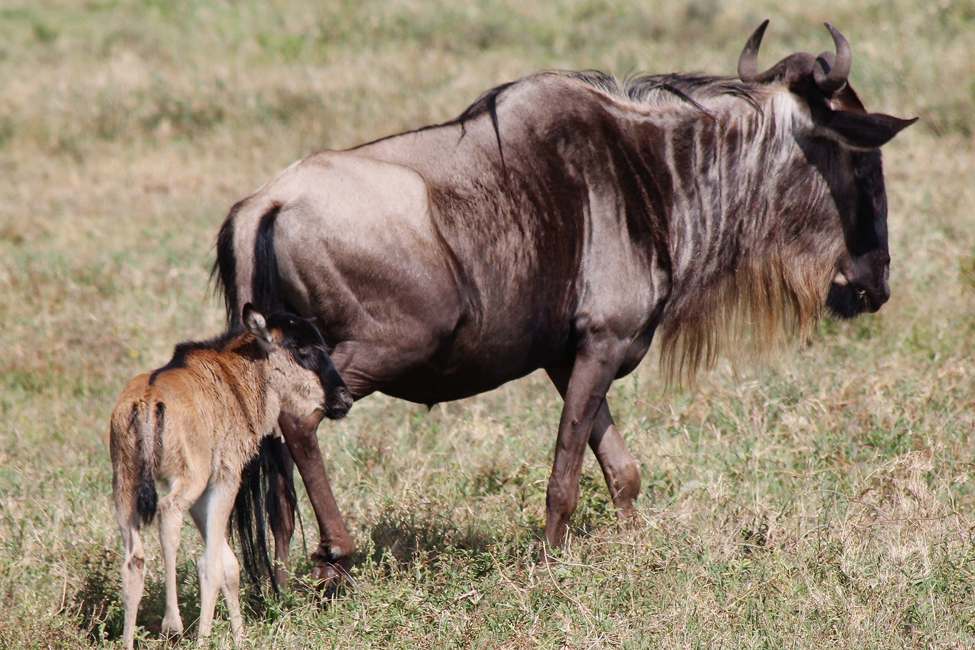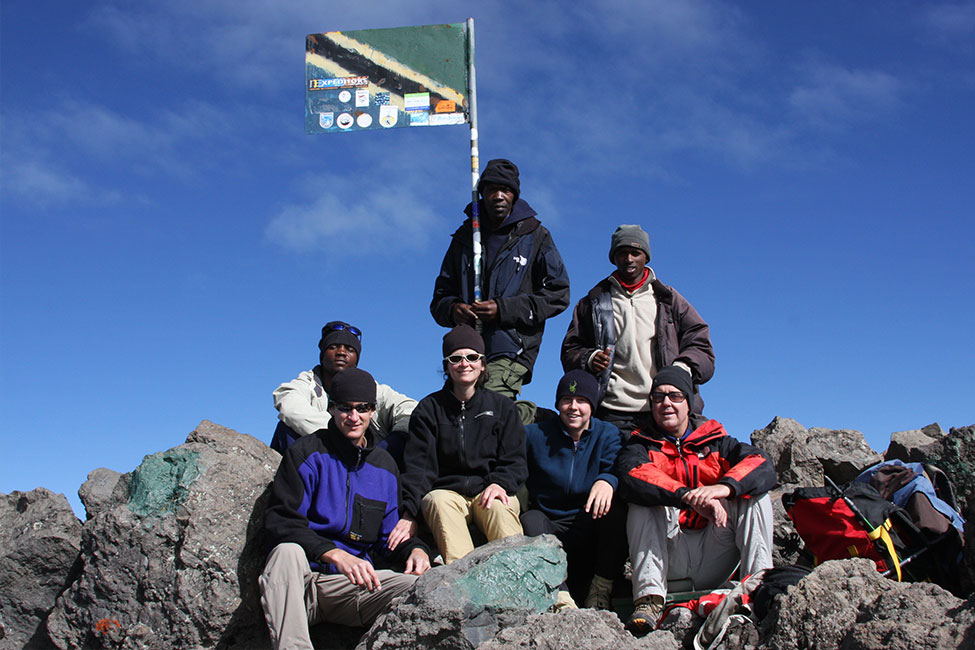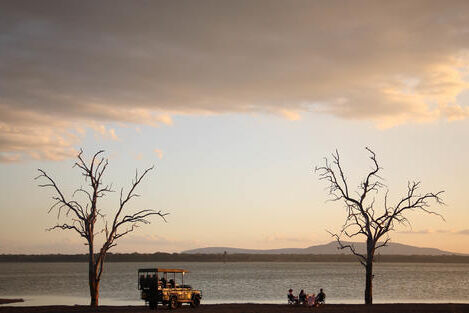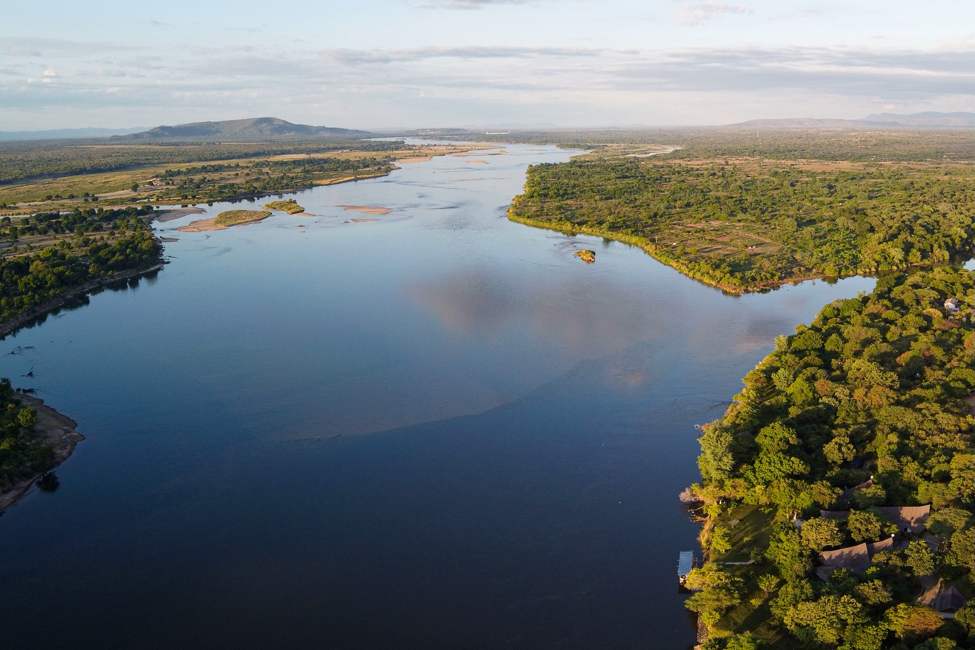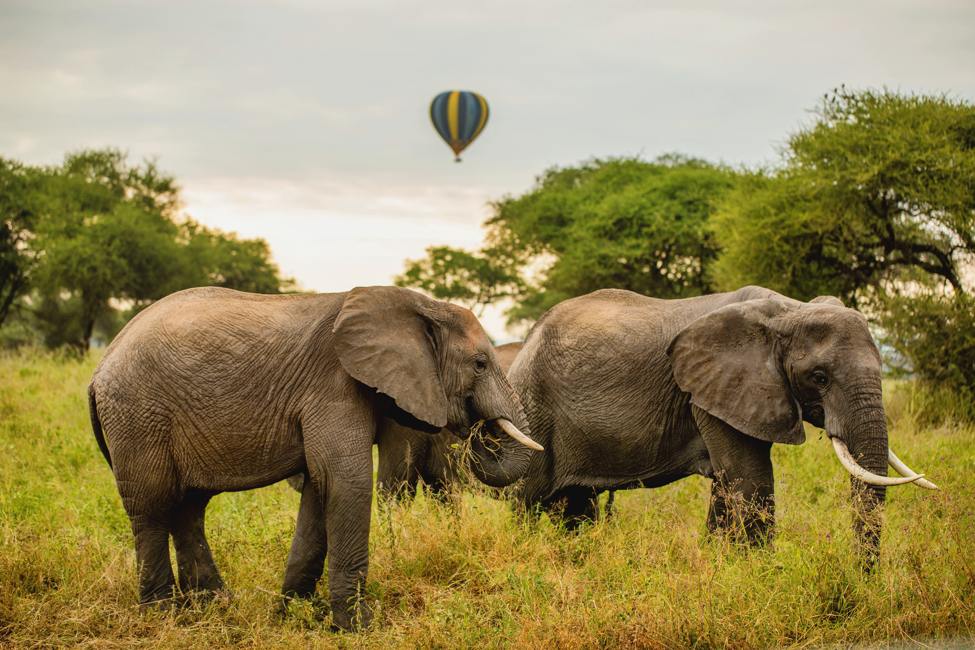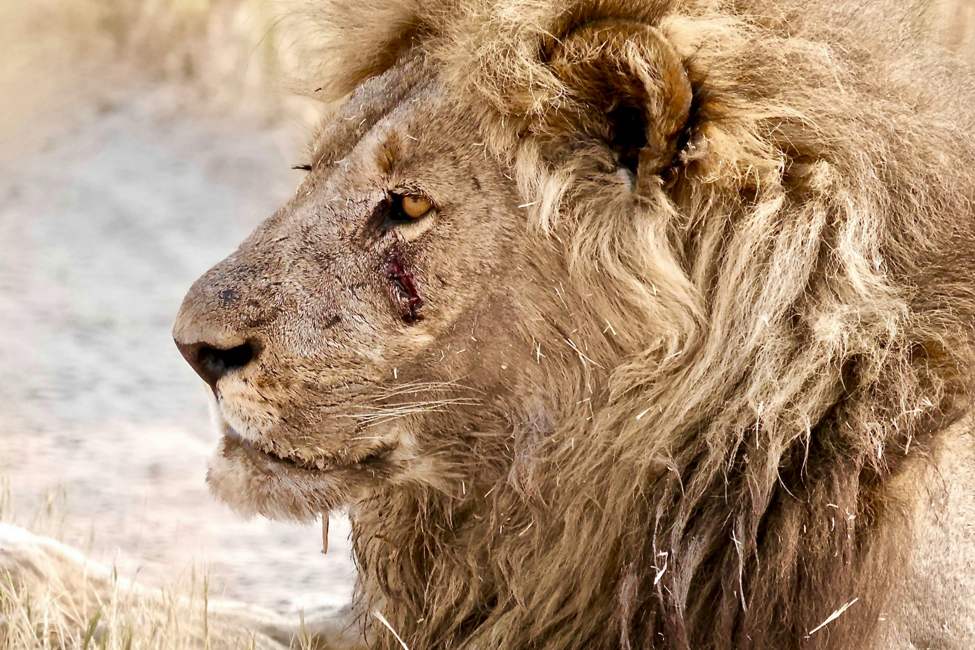Mount Kilimanjaro is the tallest free-standing mountain in the world. Photo by Sergey Pesterev.
5 Things to Know About Climbing Kilimanjaro, Africa’s Tallest Mountain
It’s an unforgettable experience to achieve a dream you’ve nurtured your entire life.
For many hikers, climbing Mount Kilimanjaro is that dream. Africa’s tallest mountain is in Tanzania, just 200 miles from the Serengeti. Unlike Mount Everest and many other famed tall mountains, Mount Kilimanjaro—or “Kili”—can be summited without a lot of technical climbing skills. Its gentle slopes mean most of the journey can be made simply by walking.
The other thing that makes Mount Kilimanjaro so incredible is its environment. “Because it starts at the equator and goes to 19,500 feet, you essentially walk from the equator to the South Pole,” says Bill Jollie. He climbed Mount Kilimanjaro with his wife and son as part of an Ujuzi safari to Tanzania and Uganda. “Doing so, you pass through the climate of every region on earth. It’s the highest you can climb without carrying oxygen.”
In this article, we cover:
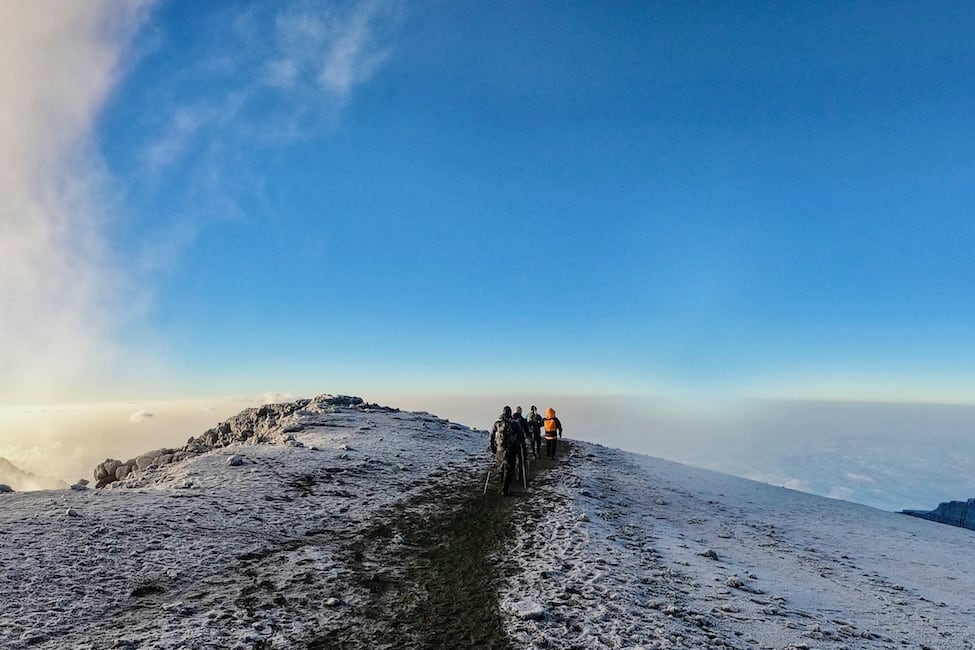
Climbers look down at the clouds from high on Mount Kilimanjaro. Photo by Tom Cleary.
What is it like to climb Mount Kilimanjaro?
Seven popular routes reach the top of Mount Kilimanjaro. Jollie took the Machame Route, nicknamed “the Whiskey Route.” This ambitious route takes at least six days to complete, and much of it is at high altitude.
The first few days are relatively subdued. Your trek begins on warm, dry plains with average temperatures of 85°F. You ascend through wet tropical forest, then dries, cooler zones.
Challenges come in the latter half of the journey as the climb becomes more technical. Its most famous challenge—other than reaching the top—is the Great Barranco Wall. Also known as the Breakfast Wall because it’s climbed after breakfast, its textured surface offers plenty of foot- and hand-holds. It takes about two hours to ascend 843 feet. At the top, you’re rewarded with an incredible view of Kibo, the main peak of Mount Kilimanjaro.
During the last days of the ascent, hikers have shorter pushes to preserve energy for the final climb. You’ll break off each day at 2 p.m. or 3 p.m..
“Now the precipices are very steep. Outhouses cantilever over the edge and there’s no horizontal space to pitch a tent,” said Jollie. “You really feel like you’re on the top of the world.”
The final ascent
The final ascent, like all great climbs, begins well before dawn. Approximately 100 people merge from various routes on any given day, coming together in a single line. “But you don’t feel crowded,” said Jollie. “The Tanzanian park authorities do a great job keeping it orderly.” Once at the summit, each group can stay for about ten or fifteen minutes to revel in the view—and the sense of accomplishment.
“You look down at Mount Meru and it’s like looking out of an airplane,” Jollie recalled of his time at the top of Kili. “You look up at the stars and feel like you can reach out and touch them. It was a once-in-a-lifetime experience.”
Read more about the Machame Route.
More than one way to the top
Mark Hooyer took the Umbwe route, often considered the most difficult route due to its fast ascent. Umbwe’s challenging nature means fewer people use the route, which appeals to some hikers. Because Hooyer had spent the previous months climbing other mountains in Africa, including the Rwenzori range in Uganda and Mount Elgon on the border of Uganda and Kenya, he felt prepared for rapid changes in altitude.
Hooyer’s group approached Kili’s southern glaciers, then accessed the Kibo Crater through the Great Western Breech. This is a steep slope formed millennia ago by the collapse of an ancient peak. They walked across the floor of the crater, then climbed to Gilman’s Point—18,885 feet above sea level, where climbers earn their climbing certificate. But like most people who make it that far, Hooyer wanted to continue to the highest point. He followed the final summit ridge to Uhuru Peak, 19,341 feet above sea level.
“As a large volcano, the region around Kilimanjaro is not punctuated by other mountains, so the views over the African plains are spectacular,” Hooyer says of his time at the top of Kilimanjaro. “Hiking up the summit ridge of Kibo, I’ll never forget the point where I looked back, eastward, over the great plains and towards the Indian Ocean. It was a clear day, and the curvature of the earth was clearly visible. It was truly the roof of Africa.”
Want to learn more about climbing to the top of Kilimanjaro? Check out our day-by-day itineraries for four popular routes.
When is the best time to go to Mount Kilimanjaro?
The most popular months for climbing are January, February, August, and September. Weather tends to be dry and warm during the day and cold at night. But there are more adventurers on the trails during these times of year. So some hikers prefer to summit Kili at other times.
Here’s what you need to know about climbing conditions at Mount Kilimanjaro throughout the year:
- March to June—The rainiest period. Clouds tend to pile up over the summit, dropping snow on top and rain at the base. This makes for a muddier climb. Cloud cover can limit visibility. On the plus side, temperatures are relatively warm.
- Late June and through July—Sunny, clear, and cold at night.
- August and September—Cool. Can have completely clear days, but usually a dripping cloud belt girdles the mountain above the forest and moorland. However, the summit can be totally clear. This gives climbers an incredible view over a vast sea of clouds. Distant mountain peaks poke through like islands.
- October to December—A season of frequent thunderstorms. Typically, the clouds disappear in the evening, leaving nights and mornings clear with excellent visibility.
- January and February—Dry, warm, and clear with occasional brief rain showers.
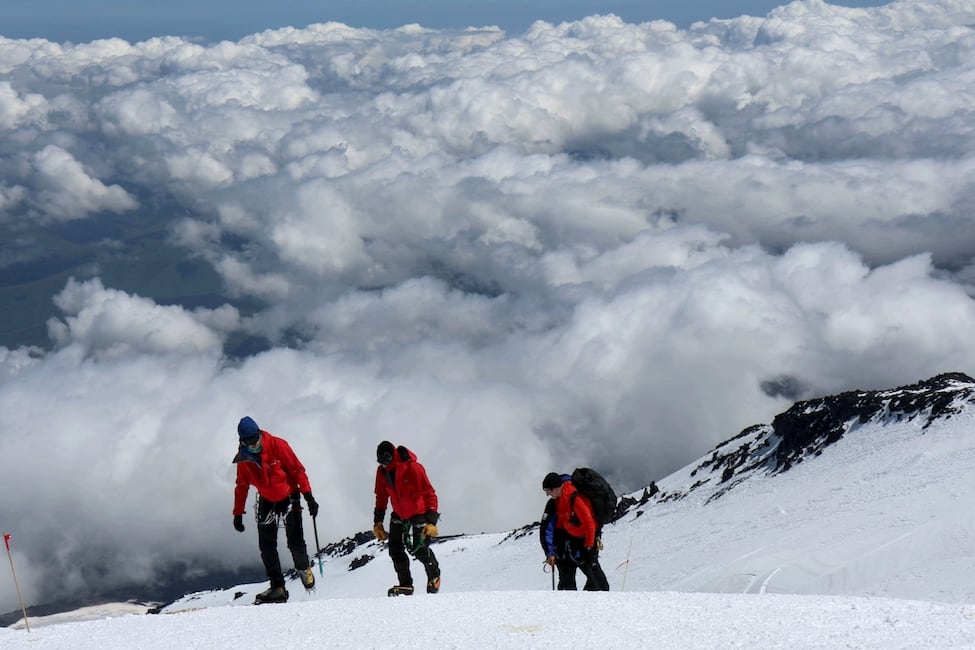
Hikers climb toward the peak of Mount Kilimanjaro. Photo by Ben Spoelhof.
How do I get to the top of Mount Kilimanjaro? And how long does it take?
Hikers can choose from seven routes up Mount Kilimanjaro. Ujuzi can work with you to help you decide which route suits your abilities and schedule the best.
The easiest route in terms of climbing skills is commonly called the Marangu Route, aka “the Coca-Cola Route”. It is also the only route with cabins for sleeping. (Others require tent camping.) These dorm-style cabins are not heated. Except for the hut closest to the peak, they do have running water and flush toilets.
However, some of the more difficult routes report a larger percentage of successful summits by climbers. This is true of the Machame Route, which Jollie took. Jollie attributes the difference to a better chance at acclimation, since hikers on the Machame Route spend more time at a higher elevation before attempting the final summit.
Five days is the minimum time it takes to climb Mount Kilimanjaro. But Ujuzi recommends taking it slower. Allow six days or longer, depending on the route. For help with acclimation, it’s also useful to spend a day at the base of Kili before your trek—unless you are coming directly from another climb, in which case you can start immediately. Allowing time for acclimation ups your chances of reaching the summit.
Once you get there, the views from the top of Kilimanjaro are like no other. No wonder it has been named a World Heritage Site.
Explore Tanzania on These Safaris
How do I choose a guide?
Mount Kilimanjaro is a nationally protected area. This means only registered guides and trekking agencies are permitted to lead climbers up the slopes. This is not an area to cut costs. A good climb operator will supply experienced and well-paid guides, a cook, porters, food, water, and camping equipment.
How do I prepare for my climb?
The wonderful thing about climbing Mount Kilimanjaro is it requires no special expertise or mountaineering equipment. It is more of a hike than a climb. But that doesn’t make it easy.
The biggest obstacle to reaching Kili’s summit is altitude sickness. This illness occurs thanks to the decrease in air pressure and oxygen as you get further from sea level, causing headaches and fatigue. Fitness at sea level is not a good predictor of vulnerability to altitude sickness. Case in point: international tennis champion Martina Navratilova was forced to abandon her own ascent of Mount Kilimanjaro due to altitude sickness.
“It’s an issue of acclimation,” said Jollie, advising climbers to listen to their guides. “The guides deliberately try to stay in the background, but they’ll say, ‘Slowly, slowly.’ No matter how slowly you think you’re going, they want you to go slower.”
Train before you go
Training for several months before your trip can help prevent disabling altitude sickness. Study your itinerary. Understand the effort you will make each day and develop a training program accordingly. Hike at higher altitudes as you prepare for your trip.
Once in Tanzania, give yourself a couple days to adjust to jet lag before starting your Kili ascent. Climbing Mount Meru—the second tallest mountain in the country—prior to Kili is another wonderful way prepare, and an adventure in its own right!
Before you leave, talk to your doctor, who may have additional training suggestions and be able to prescribe medications to help prevent and treat altitude sickness.
Finally, tent-camping experience is also helpful prior to climbing Kili. Although you will have porters and a cook to help make your trek more comfortable, you will be “roughing it.”
Ready to plan your trip?
Climbing Kilimanjaro is an unforgettable experience which requires careful planning and preparation. But it’s also incredibly rewarding.
And once you’re in Tanzania, you’ll want to see more of the country as well. Kilimanjaro is part of Tanzania’s northern safari circuit, which includes other famous destinations like the Serengeti and Ngorongoro Crater. Keep your legs moving with nature walks, or sit back and relax as you enjoy wildlife viewing from a comfortable seat on a professionally guided game drive.
Ujuzi is here to help you every step of the way. Contact us today.


